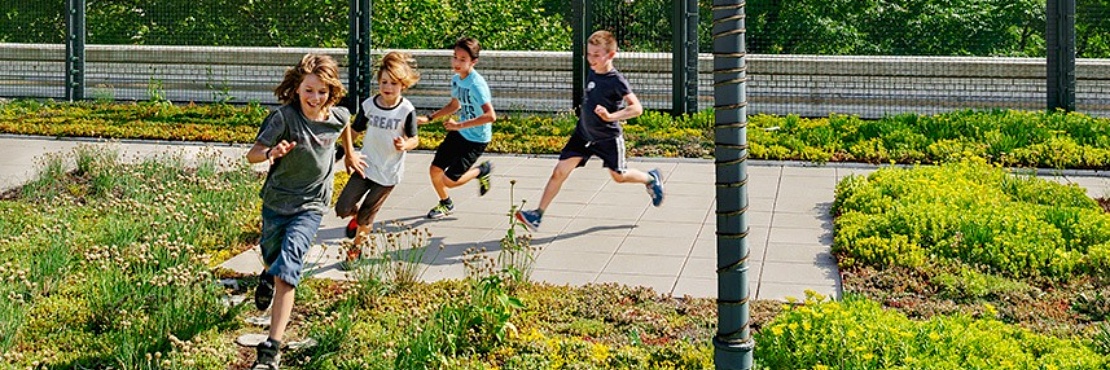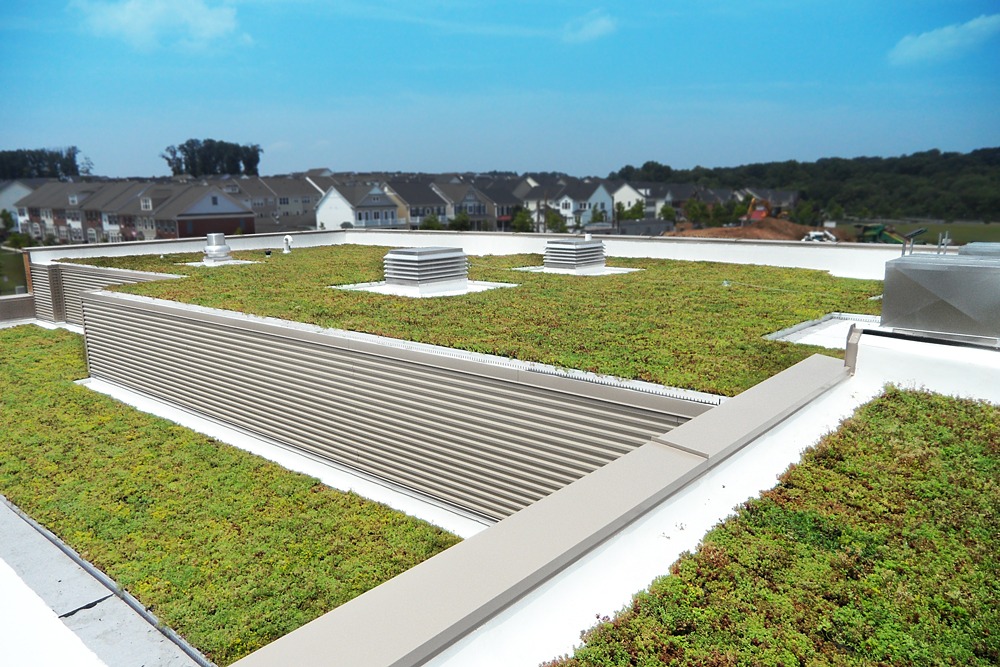Alison Davis of Environmental and Energy Study Institute (EESI) writes:
Most adults thinking back on their school days likely do not have any memories from the roof of their school building—or if they do, they probably were not supposed to be there. But this could change if schools across the country are upgraded to have green roofs, which create natural spaces that are beneficial to students as well as to the environment and local communities.
Green roofs provide climate change mitigation and adaptation benefits that can protect human health, especially for children. They are a nature-based solution in which vegetation is grown on top of a building. This provides multiple benefits, from reducing building emissions through better temperature regulation to decreasing stormwater runoff and water pollution.
The shade provided by rooftop vegetation and insulation from the soil can help to regulate the internal temperature of buildings, meaning less energy is required for heating and cooling systems. This not only results in fewer emissions, but also reduces energy costs for the school. On top of that, green roofs reduce the severity of the heat island effect, which is caused by gray infrastructure such as concrete and is exacerbated by more frequent and severe extreme heat due to climate change. Better temperature regulation in schools can facilitate a more comfortable and productive learning environment.
Green roofs provide climate change mitigation and adaptation benefits that can protect human health, especially for children.
A standard, impermeable roof sends water right into storm drains, bringing pollutants from the roof, gutter, or street directly into nearby water bodies. Green roofs, however, absorb the stormwater, which can reduce runoff from the roof by up to 65 percent. In addition, rooftop vegetation supports biodiversity by providing and connecting habitat for plant, pollinator, and bird species. It also improves local air quality and can even help to combat urban smog. Better air quality in and around schools will help to alleviate the severity of symptoms in childhood asthma, especially in urban areas. Green roofs can also complement other efforts to improve air quality such as electrifying school buses.
Green roofs in schools offer an ideal setting for outdoor classes and after-school programs. Students can receive hands-on experience in a variety of subjects including science, art, climate change, nutrition, and agriculture. Students (and teachers) can benefit from green roofs through improved mental health. Experts agree that exposure to natural green spaces is an effective method to prevent or reduce symptoms of depression and anxiety in people of all ages. In fact, Canada launched a “nature prescription program” in 2021 known as PaRx, allowing healthcare professionals to prescribe free access to national parks for their patients. Studies even show that exposing children with ADHD to green outdoor spaces can help to alleviate and manage their symptoms.
To illustrate the potential of educational green roof programs, Rep. Velázquez cites the success of the Greenroof Environmental Literacy Laboratory at the Greenwich Village School in New York City. The school installed a 9,000-square-foot green roof in 2012, resulting in a 32.7 percent decrease in greenhouse gas emissions and a 27.8 percent reduction in annual onsite energy consumption. Vicki Sando, the teacher who developed the program, said, “The installation of our green roof fulfills [the school’s] dream of establishing a living learning laboratory to boost environmental literacy and enable our students to learn about their stewardship role in the health of the planet.”
Also read: Green Roofs on Schools by rooflite and Public School 165 – Webnet on the catwalk in Manhattan by Jakob Rope Systems.
Read more: Laying the Groundwork for a Better, Cleaner Public School System with Green Roofs
 Greenroofs.comConnecting the Planet + Living Architecture
Greenroofs.comConnecting the Planet + Living Architecture






